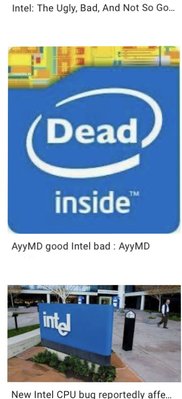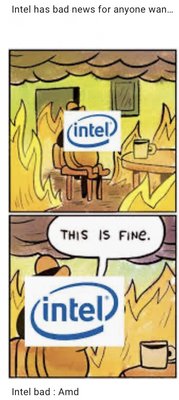SPBHM wrote:the P3 RDRAM just helped people to see it as unnecessarily expensive for no benefit, and I don't think it generated much of a demand
That's not the point, is it? Even if a strategy failed, it was still a strategy.
I also don't think consumers should be involved. RDRAM for P3 was a high-end solution (they even had a dual-channel RDRAM solution for multi-socket Xeon systems), aimed at workstations and servers.
SPBHM wrote:SDRAM chipsets continued to dominate, and the p4 I think gained a lot of traction when they gave up on being rdram exclusive in 2001
I don't think RDRAM alone is the reason for that.
That's just the pattern you see in general: When a new CPU is introduced, it is expensive. Over time, prices drop as manufacturing matures, demand rises, and more/cheaper variations of the chips become available. If you look at the original Pentium, the PII and the PIII, you see the same pattern: expensive at introduction, prices dropping after a year or so, eventually becoming mainstream.
But again, as I say, a failed strategy is still a strategy. Had RDRAM gained more traction in the beginning, then things could have looked a lot different. As it stands, there was never even a chipset for the Pentium 4 models with 800 MT/s or faster FSB. And there was never support for RDRAM faster than PC1066 (even though much faster memory modules existed, and even newer standards, like X DR, which was used in the PlayStation 3). So the performance of RDRAM was 'frozen in time', allowing DDR to eventually overtake it.
If Intel continued to commit to RDRAM, then there would have been faster RDRAM chipsets as well, and they may have remained the performance leader.
Heck, the Pentium 4 as a whole was a failed strategy. They wanted to push clockspeeds to extremes, targeting 10 GHz, but fell well short. The Core architecture was a different strategy, and aside from targeting much lower clockspeeds, they also changed the memory and caching around. Since Core, Intel focuses on very low-latency memory access, and the caches are so large and smart that memory bandwidth is not that much of an issue anymore.
As discussed earlier, Intel still has an advantage in gaming, and a big part of that appears to be their super low-latency memory.
So an entirely different strategy from the Pentium 4, where the cache was tuned to hide the latencies of RDRAM, but using extremely low latency memory didn't really make much of a difference.


